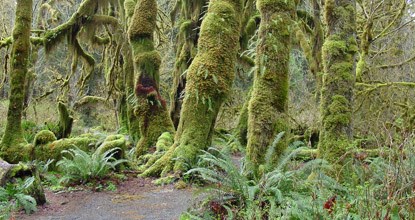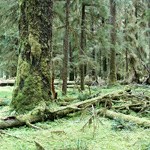
Ocean-Born ForestsThe lush forests in the Quinault, Queets, Hoh, and Bogachiel valleys are some of the most spectacular examples of primeval temperate rain forest in the lower 48 states. These rain forests once stretched from southern Oregon to southeast Alaska, but little remains outside of protected areas. Other temperate rain forests grow in a few isolated spots around the world including Chile, New Zealand and southern Australia.Recipe for Olympic's Temperate Rain Forest
Where To See Temperate Rain ForestsThe west-facing Quinault, Queets, Hoh and Bogachiel river valleys all host rain forest. Trails and access roads offer visitors a way to explore of this verdant ecosystem. 
Common TreesSitka spruce - Picea sitchensis Common ShrubsSalmonberry - Rubus spectabilis Common Epiphytes
|
Last updated: April 11, 2025
